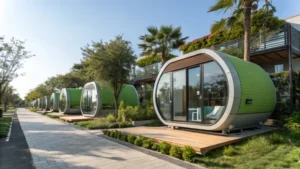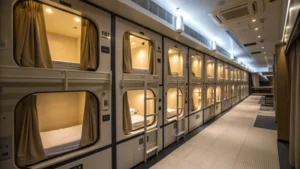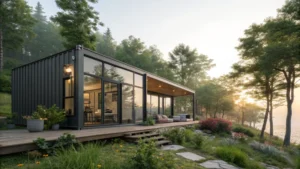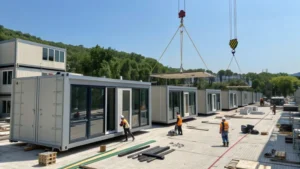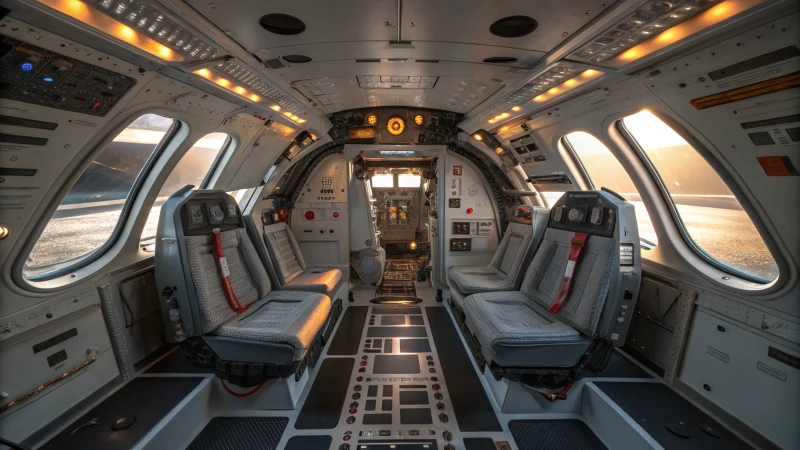
Ever wondered what it would feel like to spend weeks or even months in a space capsule? That's the big question facing the Orion Space Capsule.
The Orion Space Capsule, while technologically advanced, provides limited living space, making it less suitable for long missions without additional support modules or systems.
When I first heard about the Orion Space Capsule, my mind immediately drifted to thoughts of astronauts sharing cramped quarters far away from Earth. It's amazing how technology can take us to the stars, but the real challenge is ensuring those brave souls have enough room to thrive. In this post, I'll explore whether Orion can really support long-term missions and what tweaks might be necessary to make it a more comfortable home among the stars.
Orion Space Capsule is ideal for long missions.False
Orion's limited space makes it unsuitable for extended missions without enhancements.
Orion requires additional modules for long-term viability.True
Supplementary modules are necessary to ensure adequate space and resources.
What Are the Space Limitations of the Orion Capsule?
Imagine cramming all your essentials for a road trip into a tiny car and hitting the highway for three weeks straight.
The Orion capsule provides about 141 cubic feet of habitable space for up to four astronauts, designed primarily for short missions. For longer journeys, additional modules or docking options are necessary.
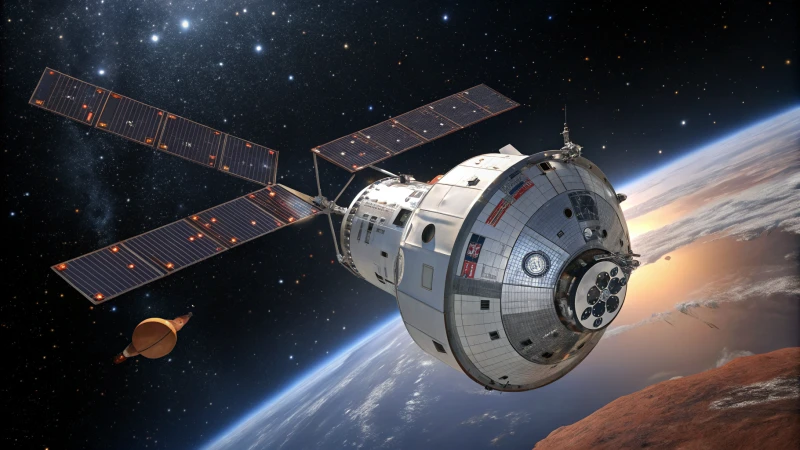
I remember once packing for a camping trip in a small tent, realizing just how tight space can get when you're living out of a backpack. That's essentially what astronauts face inside the Orion capsule1. With only 141 cubic feet of habitable space, it's like trying to live comfortably in a walk-in closet with three of your closest friends for up to three weeks. Sure, it's snug and feels like an intimate adventure, but imagine doing that in space!
Crew Capacity and Habitable Space
Inside the Orion capsule, things are designed with precision to maximize every inch of space. It's engineered to carry up to four astronauts with a total interior space of 316 cubic feet. However, only 141 cubic feet are truly livable. This setup is great for shorter missions but can become quite restrictive if the journey lasts longer than planned.
Thinking back to the time I shared a compact cabin with friends on a getaway, it's clear that while it was fun, privacy and personal space became precious commodities. Similarly, astronauts might find the limited mobility and space challenging compared to the International Space Station2, which offers more room per crew member.
Comparison Table: Orion vs. ISS
| Feature | Orion Capsule | International Space Station (ISS) |
|---|---|---|
| Habitable Space | 141 cubic feet | Over 13,696 cubic feet |
| Crew Capacity | 4 astronauts | Up to 6 long-term |
Life Support Systems
Life support systems in Orion are top-notch, similar to those first-aid kits you hope you'll never need but are glad to have. They sustain astronauts for up to 21 days without resupply, covering essentials like oxygen generation and waste management. But just as I'd need more than a weekend's supplies for a month-long camping trip, longer missions would require docking with additional modules like the Lunar Gateway3 for continued support.
Mission Suitability
Orion excels in adaptability, especially for short lunar missions or as an emergency module for the Gateway. It reminds me of my trusty multi-tool—great for quick fixes but not a substitute for a full toolbox when tackling bigger projects. For deep-space missions, like Mars expeditions, integrating Orion with larger habitat modules is crucial. The tight quarters can lead to stress and fatigue, much like how cabin fever sets in during extended stays in confined spaces.
To combat this, incorporating virtual reality environments4 and flexible exercise equipment is recommended—imagine having a virtual window with endless views or stretching out after being cooped up in a small tent.
Storage and Supplies Management
Orion’s innovative storage solutions are akin to those clever packing hacks you see on travel blogs. Yet for extended journeys, integrating additional cargo modules or planning resupply missions is essential. This ensures that food, water, and necessary equipment are adequately stocked, much like ensuring enough firewood and snacks for an extended camping trip.
Thermal and Radiation Protection
Safety in space is paramount. Orion's radiation shielding and thermal protection remind me of the times I've layered up against harsh weather—it's all about staying safe and comfortable. While sufficient for lunar missions, further enhancements may be needed for extended missions like Mars trips. Continuous development in this area is crucial to guard against solar radiation5 and cosmic rays during prolonged exposure in space.
Orion capsule has 316 cubic feet of total interior space.True
The Orion capsule's total interior space is indeed 316 cubic feet.
Orion can sustain astronauts for up to 30 days without resupply.False
Orion can sustain astronauts for up to 21 days without resupply.
How Does Orion's Life Support System Handle Extended Missions?
Imagine being in a confined space, surrounded by the vast unknown of space. Orion’s life support system is your lifeline on this adventure.
Orion's life support system can sustain astronauts for up to 21 days with advanced oxygen generation and carbon dioxide removal. For longer missions, it integrates with larger habitats like the Lunar Gateway.
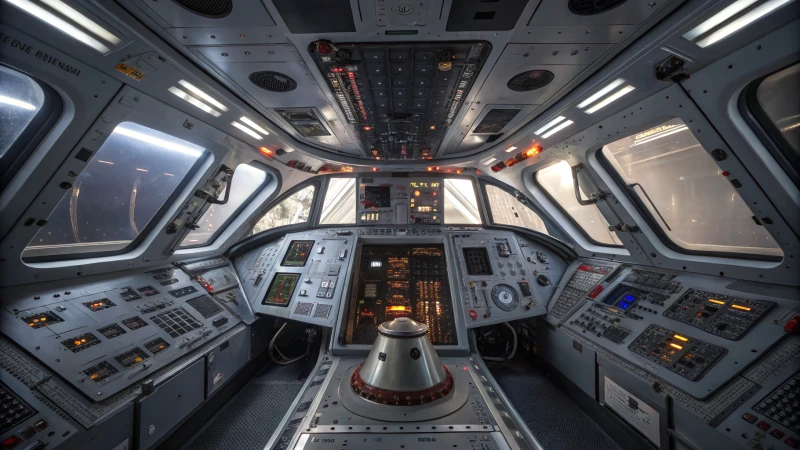
Life Support System Components
As I ponder the incredible journey of space exploration, I can't help but marvel at the technology that keeps astronauts safe millions of miles from Earth. Orion's life support system is a masterpiece, crafted with cutting-edge technology to keep the crew breathing easy in deep space. This system includes oxygen generation, carbon dioxide removal6, and waste management. These elements are the unsung heroes that maintain a breathable atmosphere inside the spacecraft.
| Component | Function |
|---|---|
| Oxygen Generation | Provides breathable air for the crew |
| CO2 Removal | Extracts carbon dioxide from cabin air |
| Waste Management | Manages human waste and cabin cleanliness |
Handling Extended Missions
I often imagine what it would be like to be on an extended mission, far from home. For missions that stretch beyond three weeks, Orion cleverly docks with habitats like the Lunar Gateway7. This integration not only expands its life support capabilities but also provides additional supplies and space. It's these thoughtful designs that are crucial for keeping the crew comfortable and safe over longer periods.
Psychological and Physical Considerations
Being cooped up in a small space for an extended time can be tough. The psychological challenges due to confinement and limited mobility are real. Orion's design thoughtfully includes solutions like virtual reality environments and flexible exercise equipment to help mitigate stress and fatigue. I believe these measures are not just about physical health but are vital for keeping spirits high during prolonged8 missions.
| Challenge | Mitigation Strategy |
|---|---|
| Psychological Strain | Virtual reality for relaxation |
| Physical Movement | Exercise equipment for fitness |
Integration with Larger Habitats
While Orion excels as a transit vehicle, it’s fascinating how it adapts for extended missions by integrating with larger structures. Future Mars expeditions will likely see Orion paired with spacious modules, transforming it into an effective transport and emergency lifeboat9. It’s like having your own versatile space RV, ready for any cosmic adventure.
Orion's life support system can operate independently for 30 days.False
Orion's life support is designed for up to 21 days without resupply.
Virtual reality is used to mitigate psychological strain in Orion.True
Virtual reality environments help reduce stress during prolonged missions.
How Can We Overcome Psychological Challenges in Orion's Confined Spaces?
Imagine spending weeks in a space no bigger than a small living room, miles away from Earth.
Psychological challenges in Orion's confined spaces can be tackled with tools like virtual reality, adaptable workout gear, and smart mission strategies. These tactics are crucial for managing stress, fatigue, and the mental strain of confinement.
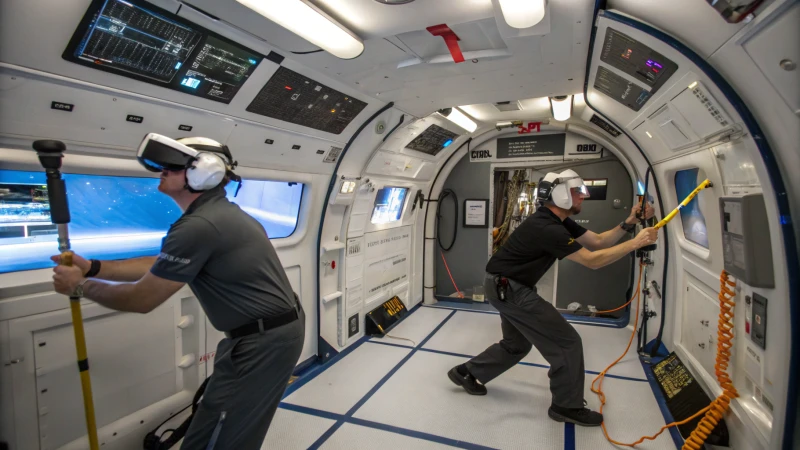
Understanding the Psychological Impact
I remember the first time I felt truly confined—it was during a long-haul flight that seemed endless. Imagine that feeling, but with no chance to step outside for fresh air. Orion's cozy quarters are perfect for short trips, but for longer journeys, it can feel like living in a shoebox. The isolation and tight spaces can lead to anxiety and diminished performance. That's where virtual reality environments10 come into play, offering a mental escape that's as vital as the air we breathe.
Innovative Exercise Solutions
I've always found solace in a good workout after a stressful day. Physical activity doesn't just keep the body fit; it clears the mind. In space, adaptable exercise equipment becomes a lifeline for astronauts, helping them stay physically and mentally sharp. It's fascinating to see how NASA's research11 shows that regular exercise uplifts mood and boosts brain power—a crucial aspect for those on board.
Role of Mission Planning
Effective mission planning is like organizing a family road trip; it requires careful thought and flexibility. Rotating tasks and scheduling regular calls home can give astronauts a sense of routine and support, much like sharing dinner tales with loved ones after a long day. This strategic planning helps maintain engagement and reduces loneliness.
Creating a Supportive Environment
Before my first big project, we had a team-building day, which made all the difference in how we worked together later on. The same goes for space missions. Team-building exercises before and during the mission strengthen bonds, essential when living in close quarters. Regular check-ins by remote psychological support teams ensure that any mental health concerns are quickly addressed.
Table: Strategies to Mitigate Psychological Challenges
| Strategy | Implementation |
|---|---|
| Virtual Reality Environments | Immersive experiences to alleviate stress and boredom |
| Flexible Exercise Equipment | Customizable workout plans for mental and physical health |
| Effective Mission Planning | Task rotation and communication schedules |
| Team Building Exercises | Strengthening relationships pre-mission and in-flight |
Exploring these strategies gives us hope and direction on how psychological challenges12 can be managed effectively, ensuring our astronauts stay strong and mentally agile on their stellar journeys.
Virtual reality can alleviate stress in confined spaces.True
VR provides immersive experiences that reduce stress and boredom.
Exercise equipment is unnecessary for mental health in space.False
Exercise boosts mood and cognitive function, essential for mental health.
How Can We Make Orion More Sustainable for Long-Term Missions?
Enhancing Orion's long-term viability is like prepping for an extended stay in the cosmos—complex yet exhilarating. Let's explore how to make this spacecraft not just survive but thrive in deep space.
Enhancing Orion's long-term viability involves adding supplemental habitat modules for extended missions, upgrading life support systems, and using virtual reality to ease psychological stress. Teaming up with larger habitats like Gateway is key.
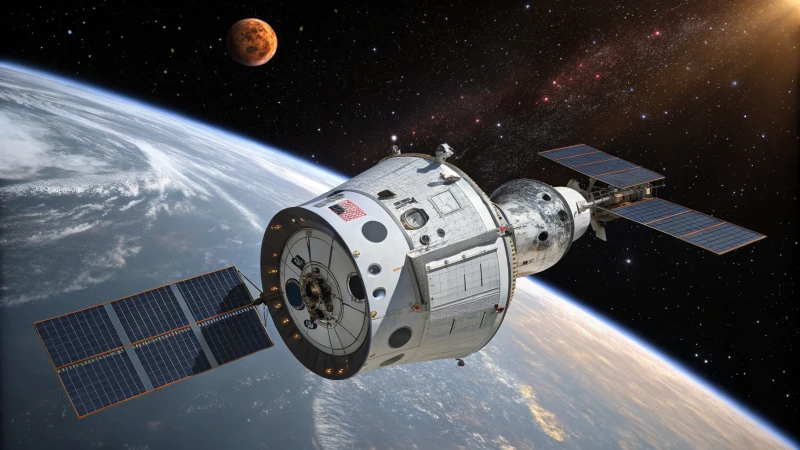
Expanding Crew Comfort and Capacity
Imagine being on a long road trip with friends, but the car is cramped and you can barely stretch your legs. That's kind of what it's like inside Orion during those extended missions. With just 141 cubic feet of habitable space, every inch counts. By integrating supplemental habitat modules13, we can give astronauts room to breathe, move, and maybe even dance a little. A cozy, spacious environment could be the difference between mission success and a cabin-fever meltdown.
| Feature | Orion | ISS |
|---|---|---|
| Habitable Space | 141 cu ft | 388 cu ft |
| Crew Capacity | 4 | 6+ |
Advanced Life Support Systems
Orion's current life support systems are like a reliable lifeboat—perfect for short journeys. But what happens when the journey gets longer? That's where docking with the Lunar Gateway14 comes in handy. Imagine it as refueling at a pit stop, allowing us to extend our adventure without running dry. Enhanced oxygen generation and waste management systems will keep everyone breathing easy and the living space fresh.
Mission Adaptability for Deep Space
Orion's heart beats strongest during lunar missions, but for the grand adventure to Mars, we need some serious backup. Think of it as teaming up with the ultimate road crew—expansive habitat units tailored for extended human occupancy15 are like bringing an RV on steroids. These modular solutions mean we can adapt to whatever challenges deep space throws our way.
Addressing Psychological and Physical Challenges
We all know how a bad playlist can ruin a trip, right? Well, on long missions, confinement can do the same to the crew's psyche. Enter virtual reality environments and flexible exercise equipment16—our cosmic mood boosters. They keep spirits high and bodies in shape, ensuring astronauts stay mission-ready and mentally fit.
Efficient Storage and Supply Solutions
When packing for a long journey, efficient storage is crucial—especially when resupplying isn't an option. Orion's storage needs a serious upgrade for longer trips. Picture it like turning a regular suitcase into a magic Mary Poppins bag with additional cargo modules or frequent resupply missions via storage solutions17. This ensures we have everything we need without turning back.
Enhanced Thermal and Radiation Protection
Deep space travel means facing harsh elements—cosmic rays are no joke! Orion's basic protection works for quick lunar jaunts, but for the epic saga to Mars, we'll need superhero-level shielding. By teaming up with larger habitat modules, we're not just adding a layer of protection; we're fortifying our strategy against radiation threats, making sure crew safety is top-notch with radiation protection18 enhancements.
These strategies collectively prepare Orion for future challenges, transforming it into a resilient explorer ready for the vast unknowns of space. It's about evolving beyond today's limits to embrace tomorrow's possibilities.
Orion can support missions to Mars without modifications.False
Orion needs integration with larger modules for Mars expeditions.
Orion's life support is designed for short missions.True
Current systems are optimized for short durations, needing enhancements.
Conclusion
The Orion Space Capsule, while advanced, offers limited space for long missions. Additional modules are necessary to enhance comfort and support extended astronaut stays in deep space.
-
Explore the specific design elements that define the Orion capsule's crew capacity and interior layout. ↩
-
Learn about the space allocation per astronaut on the ISS to compare with Orion's limitations. ↩
-
Understand how docking with the Lunar Gateway can extend mission capabilities. ↩
-
Discover how VR environments can help mitigate confinement stress during long space missions. ↩
-
Find out about current advancements in solar radiation protection for astronauts. ↩
-
Understanding CO2 removal helps in grasping Orion's capability to maintain a safe environment. ↩
-
The Lunar Gateway's role enhances Orion's capabilities for extended missions. ↩
-
Insight into psychological effects aids in comprehending the challenges of long missions. ↩
-
Learning about its lifeboat role highlights Orion's safety measures for emergencies. ↩
-
Explores how virtual reality can improve mental well-being by offering immersive experiences that reduce stress and combat confinement effects. ↩
-
Details NASA's research on exercise regimens that enhance astronauts' physical and mental health during space missions. ↩
-
Provides insights into the psychological challenges faced during space travel and strategies to overcome them. ↩
-
Discovering advancements in supplemental habitat modules can provide insights into expanding living space on spacecraft. ↩
-
Exploring the benefits of the Lunar Gateway can reveal its role in sustaining life on long missions. ↩
-
Understanding habitat module integration is crucial for supporting extended human presence on Mars. ↩
-
Investigating VR exercise equipment can help mitigate physical stress during long-duration space missions. ↩
-
Innovative storage solutions ensure efficient use of space and resources on long missions. ↩
-
Advanced radiation protection strategies are vital for ensuring crew safety on deep-space missions. ↩





